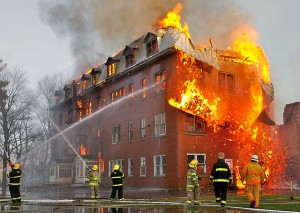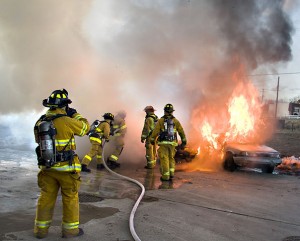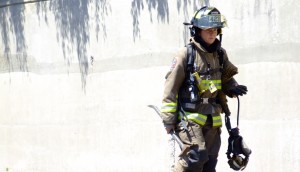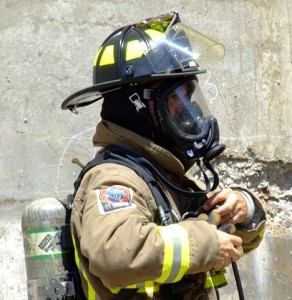This Saturday, while drinking my morning tea and perusing the health and fitness sections of various online newspapers as I often do before a starting work, I came across a headline that caught my attention.
Yup, it’s the same one you read above.
Pretty catchy, isn’t it?
You can read the full article from the Globe and Mail here: Build A Better Athlete – Starting in Kindergarten.
The article starts with a vivid recollection of a knee injury suffered by a young man, Eric Sung, while attempting a skateboarding move, described as a bunny hop, in his driveway at home. The journalist then postulates on a potential reason for all the ligaments of his knee tearing with what was described as an odd-angle landing:
“He was 24 at the time, but Mr. Sung’s childhood phys ed teachers could be to blame. According to a growing body of research, the torn knees, twisted ankles and sore backs that plague so many active adults have their origins in the school gymnasium.”
While the fault for Mr. Sung’s knee injury on his childhood teachers is highly debatable and virtually impossible to prove (it was more likely the “odd angle” at which he landed), the idea that the movement patterns we learn as children may serve us in our adulthood is definitely an important one and an area that needs to be further explored.
With many changes in education curricula shifting focus towards pure academic subjects and increased technology use by children and youth (iPads/smartphones/online gaming), there’s been a substantial shift away from physical activity and transitioning towards increased screen time and sedentary behaviours.
Even with (dwindling) mandated physical education classes in school, many children and youth are still missing out on enough appropriate exposure to fundamental movement skills (also called physical literacy – the ability to complete basic movement patterns safely and effectively) required to create a solid movement foundation for later in life.
“Comprehensive Canadian data presented in Montreal this month shows we’re doing no better: Researchers looked at Grade 4 and 5 students in Manitoba, and whether they had acquired 18 basic movement skills – such as running, kicking and hopping – all of which are laid out in the physical education curriculum. The results were dismal. No more than 10 per cent of the kids showed proficiency in any one of the movements. (As in Australia, girls fared the worst.)”
Is that it?
As our youth age, will they be at greater risk for various aches, pains, and traumas? Do we become a nation of adults prone to injury because we didn’t learn to move well as children?
Is there anything that can save us?
Is there any way to reverse this negative trend and create a nation of agile, nimble, injury-proof* citizens?
In the article, Dr Dean Kriellaars, an associate professor in the department of physical therapy at the University of Manitoba “says that as little as two or three hours a week on basic movement skills can boost kids’ proficiency dramatically and nearly eliminate performance differences between boys and girls.”
And this doesn’t have to be accomplished with traditional competitive sports.
In fact, many of the movement training strategies suggested by Dr. Kriellars would simply be playing games where the foundational physical skills and patterns are an integral part of the game but aren’t the main focus. Think back to the days of playing hopscotch or frozen tag in the playground – those simple games helped improve certain physical skills, but those skills weren’t the focus of those games.
The main focus should be on making movement fun, for life.
And that may be the secret on how to build a better athlete.
Here at Primal Human Performance, we couldn’t agree more.
This includes making movement fun for children and youth who aren’t “athletic” in the traditional sense, who aren’t interested in organized, competitive sports.
In our youth programs and working with youth, we believe that every child, with the right guidance and coaching, has the potential to be athletic in their life. They have the potential to master the fundamental movement skills that will allow them to participate in physical activity of their choosing, to the extent that they wish. They can learn to love to move and use their bodies to their full potential.
To that end, our programs are tailored to the individual and designed on building a solid physical literacy foundation for life, minimizing injury risk, and optimizing performance potential, for every type of child.
For some of our clients, that means systematically progressing to higher performance athletic development as they mature and progress, with an end goal of successfully entering collegiate or professional athletics. This may encompass progression to sports specific training, a greater focus on strength and conditioning, or power drills to enhance explosiveness.
For others, it may simply mean learning how to use their bodies efficiently so that they can stay healthy, active and happy as they grow up. Learning to improve their body awareness, basic balance and general coordination. Often, it’s a stepping stone to get a more sedentary child to feel comfortable in their own skin, outside of a potentially daunting competitive gym class where they feel judged and compared to their more athletic peers.
In the end, we really want everyone to move more. And revel in the enjoyment of that movement.
In essence, we want you to play.
*While the term “injury-proof” was used, I’m not aware of any method to completely eliminate the risk of injury from physical activity or even life. What we aim to do is minimize the risk of injury by trying to control for the factors that we can control.





(inside Peak Performance Golf)